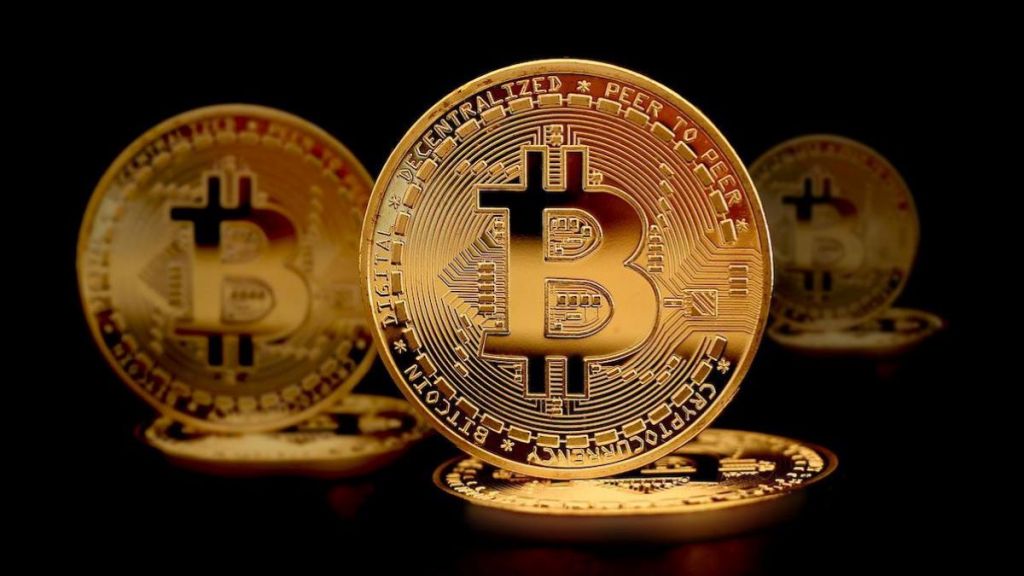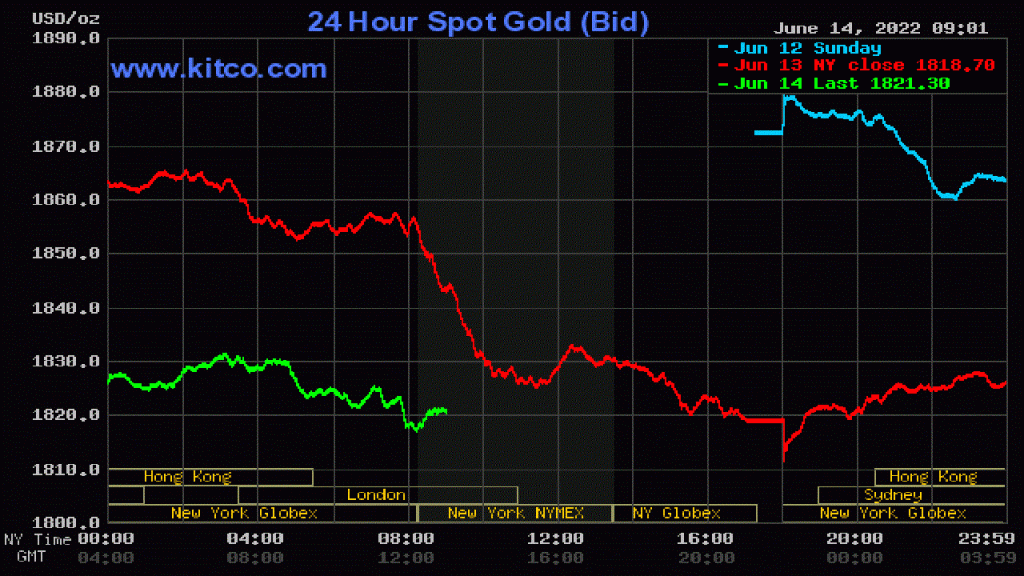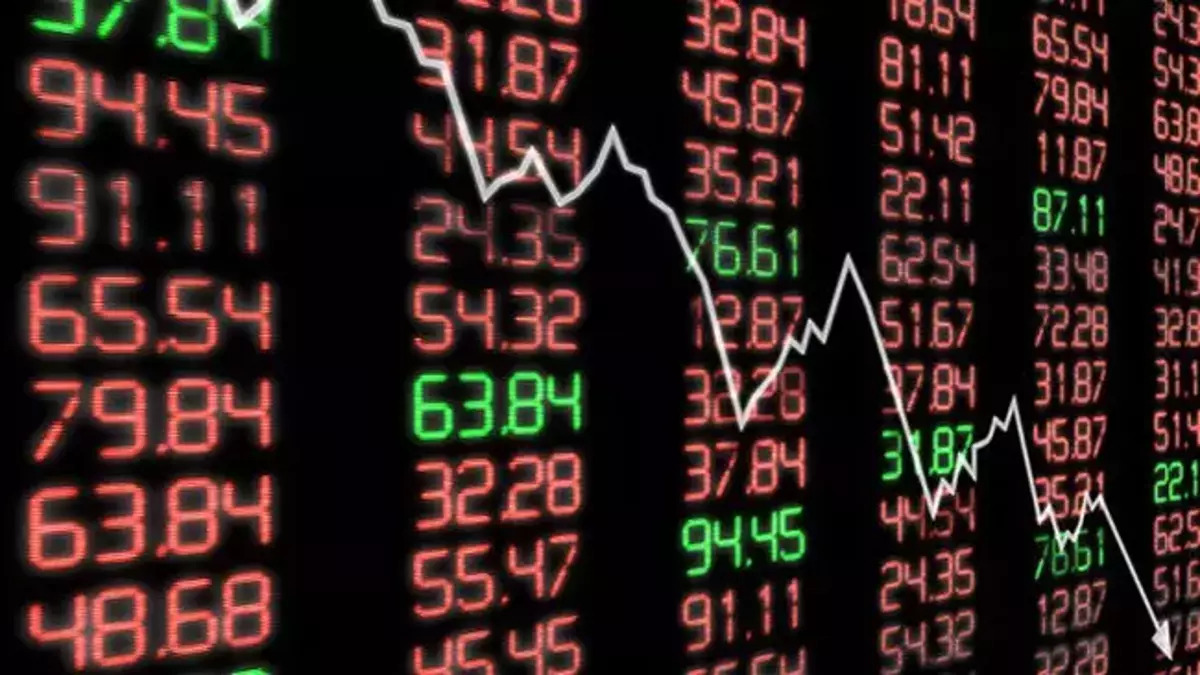Wild price fluctuations dominate gold, stocks and crypto. In this environment, the markets are shaking everywhere. Analysts warn of panic selling as markets reprice expectations for a more aggressive Federal Reserve.
Rising interest rates put pressure on gold
As you can follow on cryptokoin.com , surprisingly hot inflation data came from the USA. After that, investors are reacting to the Fed’s interest rate decision scheduled for Wednesday. Experts such as Allianz’s chief economic adviser, Mohamed El-Erian, also express their views in this context. The advisor states that the Fed needs to be more aggressive to control inflation.
The US dollar reacted positively to the news with the US dollar index trading at 104.97, close to 20-year highs. US Treasury yields also rose. This put more pressure on assets like gold. Two-year Treasury rates touched 3.25%, reaching the highest level in 15 years. The 10-year interest rates rose to 3.3%. This is the highest level since 2011. Also 2 years and 10 years were briefly reversed on Monday. This is known as a curve inversion and is often seen as a harbinger of an economic recession.

Why did the fire in the crypto market occur?
Bitcoin dropped to $22,725.66 on Monday. This is the lowest level since December 2020. With the acceleration of panic selling in this environment, the crypto space has been hit hard. At the time of writing, Bitcoin was at $22,311, down 24.86% in the past seven days. Also, the leading altcoin Ethereum dropped to the lowest level since January 2021. ETH took an even worse hit, falling 30.72% on a weekly basis to $1,218.
Crypto selling was common. Crypto lending firm Celsius went into a panic phase when it said it had stopped all operations on its platform. The company said in a statement on Sunday:
CelsiusNetwork is pausing all withdrawals, Swaps and transfers between accounts. Acting in the interests of our community is our top priority. Our activities continue and we will continue to share information with the community.
.@CelsiusNetwork is pausing all withdrawals, Swap, and transfers between accounts. Acting in the interest of our community is our top priority. Our operations continue and we will continue to share information with the community. More here: https://t.co/CvjORUICs2
— Celsius (@CelsiusNetwork) June 13, 2022
As it is known, Binance, the world’s largest crypto exchange by trade volume, is. Binance has temporarily paused Bitcoin withdrawals due to a “stuck transaction causing backlog”. So that added fuel to the fire. However, withdrawals resumed shortly after.
Analysts’ Bitcoin forecasts show what levels
Over the weekend and Monday, the crypto space lost more than $200 billion in market cap. Edward Moya, senior market analyst at OANDA, comments:
The sell-off in crypto was driven by fear of contagion. Your major crypto company Celsius is pausing withdrawals. No one saw this coming. This raises fears that certain parts of the cryptocurrency will not be able to withstand the tightening of financial conditions. This should be very troubling for cryptos as we see more technical sentiment kick in.

GlobalBlock analyst Marcus Sotiriou thinks a little differently. The analyst says the first trigger on Friday was inflation data, although Celsius headlines fueled the sell-off of crypto. The analyst makes the following statement:
Inflation is increasing rather than slowing down. I think this is a bigger contributor to the decline we’re seeing as it results in a more hawkish Fed. Now they have to pull more liquidity from the market to reduce inflation. When liquidity is removed, it hits risky assets hardest, including crypto.

Edward Moya stated that the next level of support to watch amid this downtrend is $20,000. Katie Stockton, founder and managing partner of Fairlead Strategies, looks a little further down. Stockton makes the following prediction:
There is also a risk of a drop to $19,000 after the $27,000 level fails. A breakdown (consecutive weekly closes below $27.2K) would increase the risk of secondary support in the $18.3K to $19K range.

Edward Moya: We see significant weakness for gold
Gold has reacted to rising yields and strong US dollar. Therefore, yesterday it saw a hard sell while it dropped around $50. Edward Moya says the precious metal is struggling as investors continue to digest inflation figures and concerns about another slowdown in China due to the recent Covid outbreak in Beijing and Shanghai. We see significant weakness for gold
, the analyst said on Monday. China’s Covid situation is likely to lead to a much longer supply chain issues. This will feed the inflationary fear that the markets are fighting.

In addition, expectations for Fed’s rate hikes, which were already aggressive and currently insufficient to contain inflation, were reset. Edward Moya’s views on the subject are as follows:
Markets are still working properly. There is no problem in the credit markets yet. Therefore, there is a belief that you will not see the Fed’s change course anytime soon. And now, rate hikes are likely to be bigger than anyone expected. This is bad news for non-interest bearing gold. Markets are trying to price in a more aggressive Fed tightening.

“This is still likely to be a bearish trend for gold”
Expectation is that the Fed may slow rate hikes until September or October was in the direction. And this is changing now. Edward Moya comments:
There will be significantly more volatility when we beat the Fed. There is a great deal of debate about how aggressive they will be and how they will go about signaling. This is still likely to be a bearish bias for gold. Aggressive tightening may be required in September and the rest of the year. Previously, the Fed was unable to commit beyond Jackson Hole.

gold vulnerable to $1,750
, according to Edward Moya, meanwhile, gold faces a more substantial risk of selling. Moya adds that the $1,800 support may not hold and the gold market may see a pullback towards $1,750. The analyst says:
The market predicts that the selling pressure could remain quite aggressive here. Gold is vulnerable to $1,750. And it’s likely to start getting more attractive around this level.
TDS: A technical glitch is possible as a catalyst
TD Securities strategists point out that a move below $1,810 could trigger significant selling pressure. Strategists predict:
A technical glitch is likely to be the catalyst needed to squeeze a huge amount of indifferent positions underneath.







